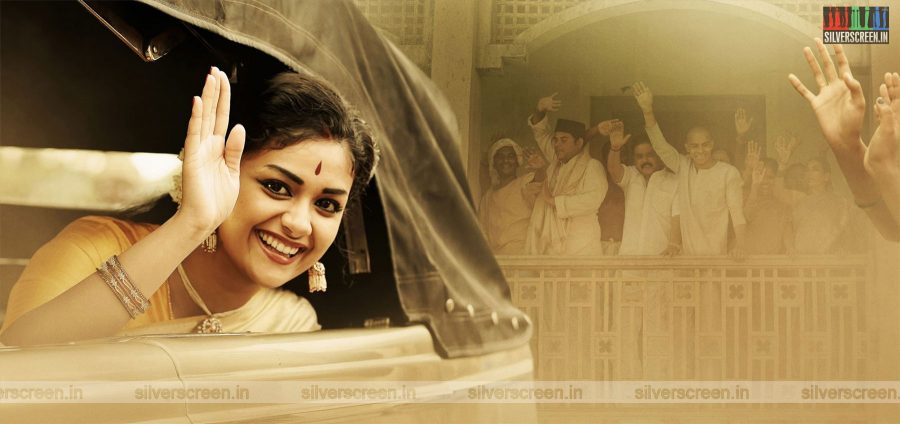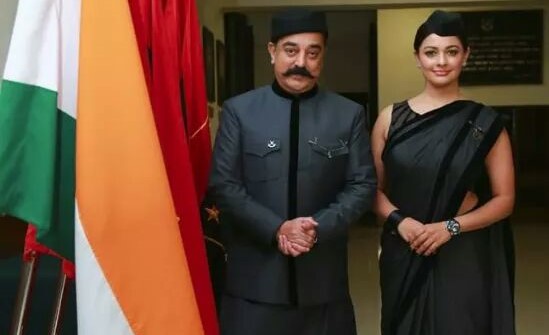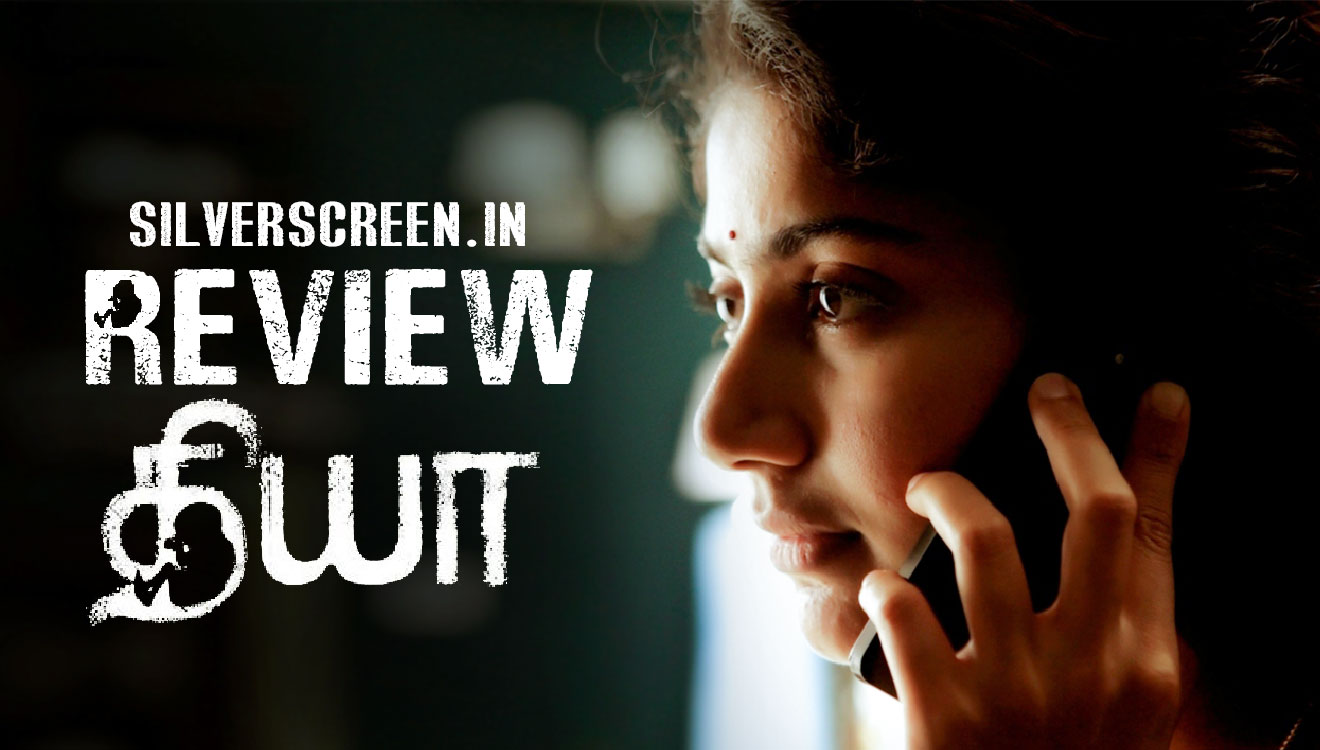Mahanati, the biopic on Savithri directed by Nag Ashwin, showed that the larger-than-life persona of the Telugu superstar permeated from the screen to her real life. Generous to a fault, indomitable on screen, yet so vulnerable in real life, the story of the yesteryear actress has been woven from some facts and some folklore. In this two-part series, the writer explores aspects of Savithri’s life, which earned her moniker ‘Mahanati’. Here’s part 1:
( గ ల గటం మ య ) మద ం ంచడం ఆ ా కరం
Smoking and drinking are injurious to health.
As you settle into the seats for Nag Ashwin’s Mahanati, your mind barely registers the mandatory statutory warning. Rarely has this much mocked advisory been more pertinent to the movie that follows.
***
Nag Ashwin’s Mahanati, as advertised unambiguously, is a tributary celebration of the life and times of the legendary actress, superstar and above all, an extraordinary human being.
While evaluation of Mahanati, as a biopic with a pre-defined grammar prescribing ingredients and formulae for such films is possible, it is more rewarding to focus on its success as an emotional tribute. Neither does it hesitate to zoom the lens into the unpleasant episodes from the actress’s storied life, nor does it shy away from painting an unvarnished picture of her free-spirited, instinctive, self-destructive emotional graph – an impish child rising from a modest home to her nonchalant conquering of Tamil and Telugu filmdom through her immense natural talent, to the gradually accelerating, self-destructive professional and personal misjudgments that eventually took a fatal toll on her.
Nag Ashwin employs several tropes typical of biopics, yet, leaves the viewer with a unique, warm tribute that feels as authentic as it is lovingly, forgivably fawning.
The film starts on the ill-fated day in 1980, that saw the legendary actress slip into coma in a nondescript hotel in Mysore. As the hotel staff, hospital attenders and doctors gradually realise the identity of the person they had handled casually, we get the first glimpse of her connect to the audience of her generation as a throng gathers outside the hospital, hailing their beloved “Savitramma”, the respectful, honorific suffix ‘amma’ being a unique gift that is hers in the Telugu film history. The theme/title song reminds us that we don’t hear of “Vanisrimma”, “Anjalimma” or even “Bhanumathamma”, her contemporaries – even with the last named being a multifaceted, much popular actress, author, director and music director.
***
It is, indeed, the Telugu prekshakudu’s perspective that pervades the film’s sensibility, with Nagi (which seems to be his preferred nickname) not only utilising the abundance of material available on her life, all compiled and published posthumously, but also tapping into the Savithri who resides in the hearts of her admirers from the generation, their accrued urban legends informing but not always explicitly appearing in the film.
Savithri was not just a Mahanati – Great Actress; in Telugu filmdom, she was a bonafide superstar, who was the equal of male stars of her time. Indeed, while the film gives enough indication of this, it is a couple of urban legends among Telugu fans that were understandably not considered for inclusion in the film, that give us a clue as to how Savithri in Telugu was different from what she was in Tamil filmdom. She was a superstar, sure, in Tamil, but she was something more in Telugu.
The first of these instances happened during a cyclone-relief fundraising event in 1977, when a garland worn by NTR – the biggest superstar of his times in Telugu – was put up for auction, which Savithri proceeded to buy for Rs 10,000, a sum much more than the personal contributions of the other stars, stunning NTR himself; this, let’s remember, was during the waning phase of her career; her rationale was that she wanted to contribute as much as she could for the flood victims. It wasn’t a philanthropic gesture. It was, for her, just the natural thing to do. Another occasion fans of the actress like to recall is when she presented a blank cheque, after Nageswara Rao – the other superstar of the times – put his Chennai house up for sale. Apparently, ANR called off the sale. These urban legends – true or not – are gleefully narrated by fans of her generation, highlighting her equal status, in talent, remuneration, with the male superstars of the time. Nagi omits these stories in the film but they help us understand the fawning of other characters in the movie towards her, and, indeed, the reverence of Ashwin himself towards his subject.
The incidents also help us segue into another aspect of the actress’ unique mindset – her gift for innocent grand gestures, which in a less generous human being would have alienated her from people around her and the public. Nagi captures this aspect beautifully throughout the movie, right from the first of her childhood episodes, with her mother in tow, when she arrives at her uncle’s doorstep, looking for livelihood. Even as a grumbling, forever-in-search-of-means-to-wealth KV Chaudhary, brilliantly played by the talented Rajendra Prasad, reluctantly takes in his wife’s sister and daughter, Savithri insists that he take in her little pet dog despite facing cynical barbs from her uncle. In another instance, when an acquaintance comes to her palatial house to invite Savithri for her daughter’s wedding, she removes the necklace adorning her daughter’s neck, as a present. Much later in life, relegated to a matchbox house in Anna Nagar, she repeats the gesture, albeit by pawning a valued saree, to help out a taxi driver, who had casually shared his tale of woe trying to raise funds for his daughter’s wedding; in penury or in affluence, her generosity expresses itself grandly.
The film painstakingly documents her limitless generosity and humane spirit. She would donate the few annas in her purse earmarked for a rickshaw trip to school, to hungry alms seekers; we see her recruiting a fan as her personal attendant, allowing him to take a large control of her finances. He eventually cheats her.
This endearing, innocent grandeur also manifests itself throughout her professional life in her reactions to challenging dares foisted upon her by unsuspecting authoritarian figures.
The references in the film can be seen on the sets of Maya Bazaar, legendary director KV Reddy calling the shots (director Krish in an excellent cameo); Marcus Bratley, another legend in South Indian cinema, behind the camera; and Singeetham Srinivasa Rao, now veteran, decorated director, an assistant to Reddy. He, famously, calls for a pack-up, with Singeetham taken to task for not having arranged for glycerine. Reddy is certain that his intended shot of the heroine in tears cannot be canned now, and we see our first glimpse of Savithri – the actress, as she innocently offers to perform the shot without glycerine. Reddy’s cynical response about him needing tears in exactly one eye, and Savithri’s breathtaking response of “How many drops?”, of course, are part of her folklore now. When Reddy’s cynicism turns into an expression of awed, affectionate blessings, we know it’s only Savithri who could have got away with that grand gesture of a quip. She had the talent, she knew it and she knew how to offer it, in exactly what measure, never being awed by the reputation of the ringmasters. It is this same self awareness that pushes her to self-learn dance steps as a child, when the dance master dismisses her as an incapable brat. Again, she wouldn’t rest until she has proven him wrong, while her inherent innocent charm ensures that her confidence is never mistaken for impertinence. Even when proven wrong, authority bows down in reverence to her talent.
***
The Telugu flavour permeating the movie also helps us identify another interesting aspect of her career – one wonders about the viability of the movie’s dubbed version, mainly because this ‘Mahanati’ also was a different person in the minds of Tamil film audience. Indeed, this manifested itself in the reactions of a prominent Chennai-based critic, who wondered why the director hadn’t given us a glimpse of her reactions to working with Tamil superstars of the time, MGR and ‘Sivaji’ Ganesan. While Ganesan is a passing reference in the film, MGR, with whom Savithri did one prominent movie, does not figure at all! Apart from the borderline misogynistic notes of that observation, in that why would or should a biopic on an actress box her into studying her responses to popular male stars of the time, it also serves to illustrate the different person she was in the minds of Tamil film-goers. In Tamil, she was ‘Nadigayar Thilagam’, the honorific defining her in relation to the greatest actor of his times, and arguably, in Indian film history, ‘Sivaji’ Ganesan, who was ‘Nadigar Thilagam’.
Recommended
In Telugu, her career highlight was Maya Bazaar, where she outshone NTR, ANR and SV Ranga Rao, doyen actor of his times in Tamil and Telugu. The film is popular in Tamil too, but her career highlight in Tamil is Paasa Malar, where she is defined in relation to, as she would be through her Tamil career, that man again, ‘Sivaji’ Ganesan. She is his sister in the movie, and such was the performance of the two thespians, that barely any of their subsequent films together as a romantic pair, succeeded at the Tamil Nadu box office. She was, to Tamil people, Sivaji’s sister, in her defining role, talent and place in Tamil cinema. This, perhaps, gives us a glimpse into why the celebrated Tamil-based critic saw her through the prism of MGR and Ganesan.
******
The author can be found on Twitter at @nom_d_plum. Watch out for this space for Part 2 where the author explores Savithri’s relationship with Gemini Ganesan.



